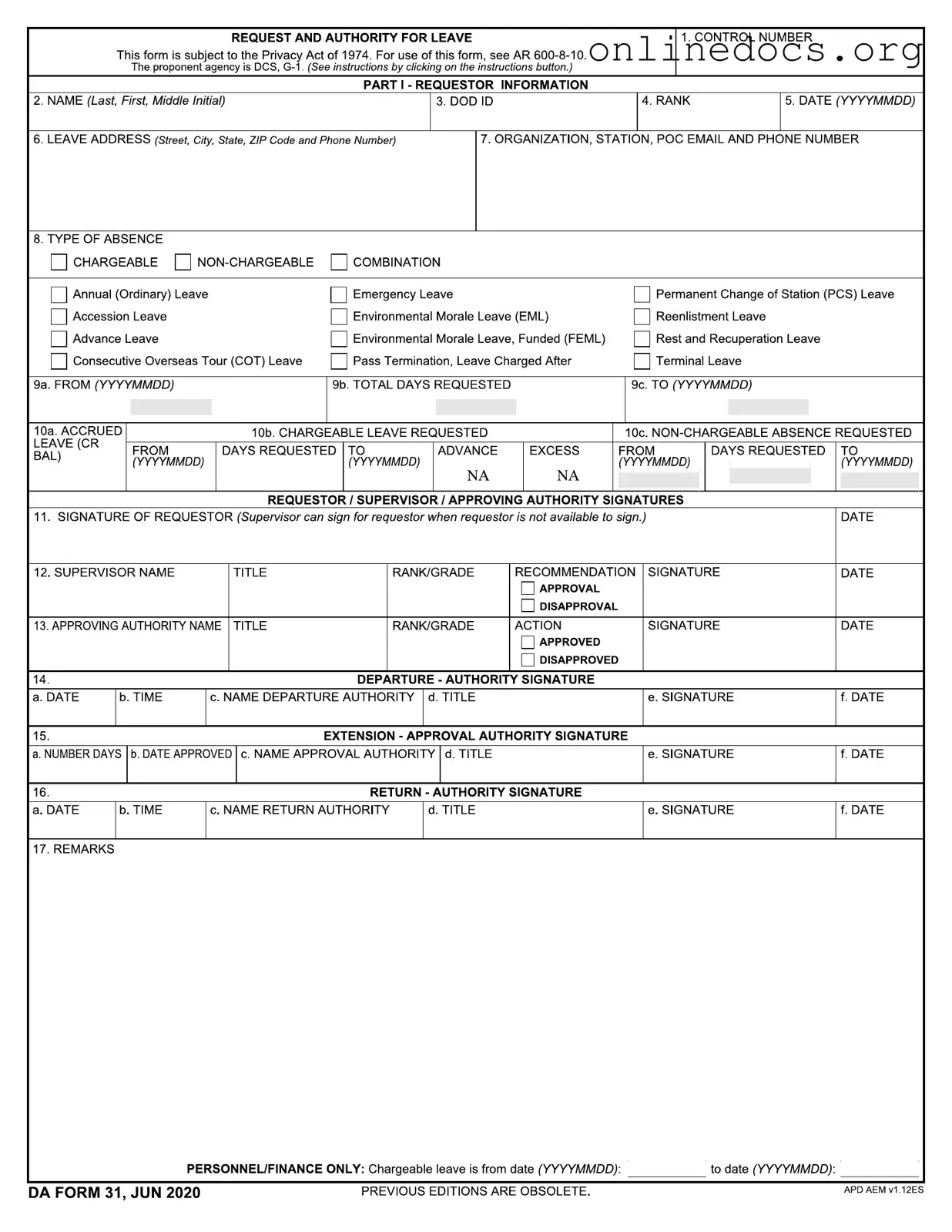The DA Form 2-1, also known as the Personnel Qualification Record, serves as a detailed summary of a service member's qualifications, assignments, and training. Similar to the DA 31 form, it requires personal information such as the member's name, rank, and identification number. The DA 2-1 is crucial for tracking a soldier's career progression and is often used in conjunction with leave requests to ensure that personnel are qualified for their assigned duties during their absence.
The DA Form 4187, or Personnel Action, is used to document various personnel actions, including requests for leave. Like the DA 31, it requires the service member's details and the nature of the request. This form allows for a broader range of actions beyond just leave, such as promotions and transfers, making it a versatile tool for managing personnel matters in the military.
The DA Form 600-8-10, which outlines the policies for leave and passes, closely relates to the DA 31 form. It provides guidelines on how leave is to be managed within the military, detailing the types of leave available and the procedures for requesting it. While the DA 31 is the actual request form, the DA 600-8-10 serves as a reference for the policies governing those requests.
The DD Form 214, or Certificate of Release or Discharge from Active Duty, is another important document that shares similarities with the DA 31. While the DD 214 is issued upon a service member's separation from the military, it includes information about the member’s service, including any leave taken. Both forms reflect critical aspects of a service member's career and are essential for maintaining accurate records.
For individuals looking to formalize a rental agreement, utilizing a well-structured Lease Agreement document can significantly enhance clarity in the landlord-tenant relationship. To efficiently create this essential document, you can access the complete Lease Agreement template by visiting comprehensive Lease Agreement form.
The DA Form 1059, which is used for academic evaluation reports, also bears some resemblance to the DA 31. It includes personal identification information and is used to assess a soldier's performance during training. While the DA 31 focuses on leave requests, both forms are integral to maintaining a soldier's record and ensuring that all aspects of their service are documented.
The DA Form 7500, or Leave Request and Authorization, is specifically designed for reservists and is similar in purpose to the DA 31. It allows reservists to request leave from their duties and requires similar information, such as the type of absence and dates requested. Both forms facilitate the process of managing leave within military operations.
The DA Form 31-2, also known as the Leave Control Log, is used to track leave requests within a unit. This form operates alongside the DA 31 by providing a systematic way to monitor who is on leave and when they are expected to return. While the DA 31 is the request form, the DA 31-2 is the record-keeping tool that helps ensure that leave is managed efficiently.
The DA Form 137-3, or Installation Clearance Record, is utilized when a service member is preparing to leave an installation. It requires personal information and serves to ensure that all obligations are met before departure. Like the DA 31, it is essential for maintaining orderly transitions within military operations, especially when soldiers are taking leave or relocating.
Finally, the DA Form 4856, or Developmental Counseling Form, is used to document counseling sessions with service members. While it focuses on performance and behavior, it also includes personal information and can reference leave situations when necessary. Both forms are essential for maintaining clear communication and records regarding a service member's status and needs.
